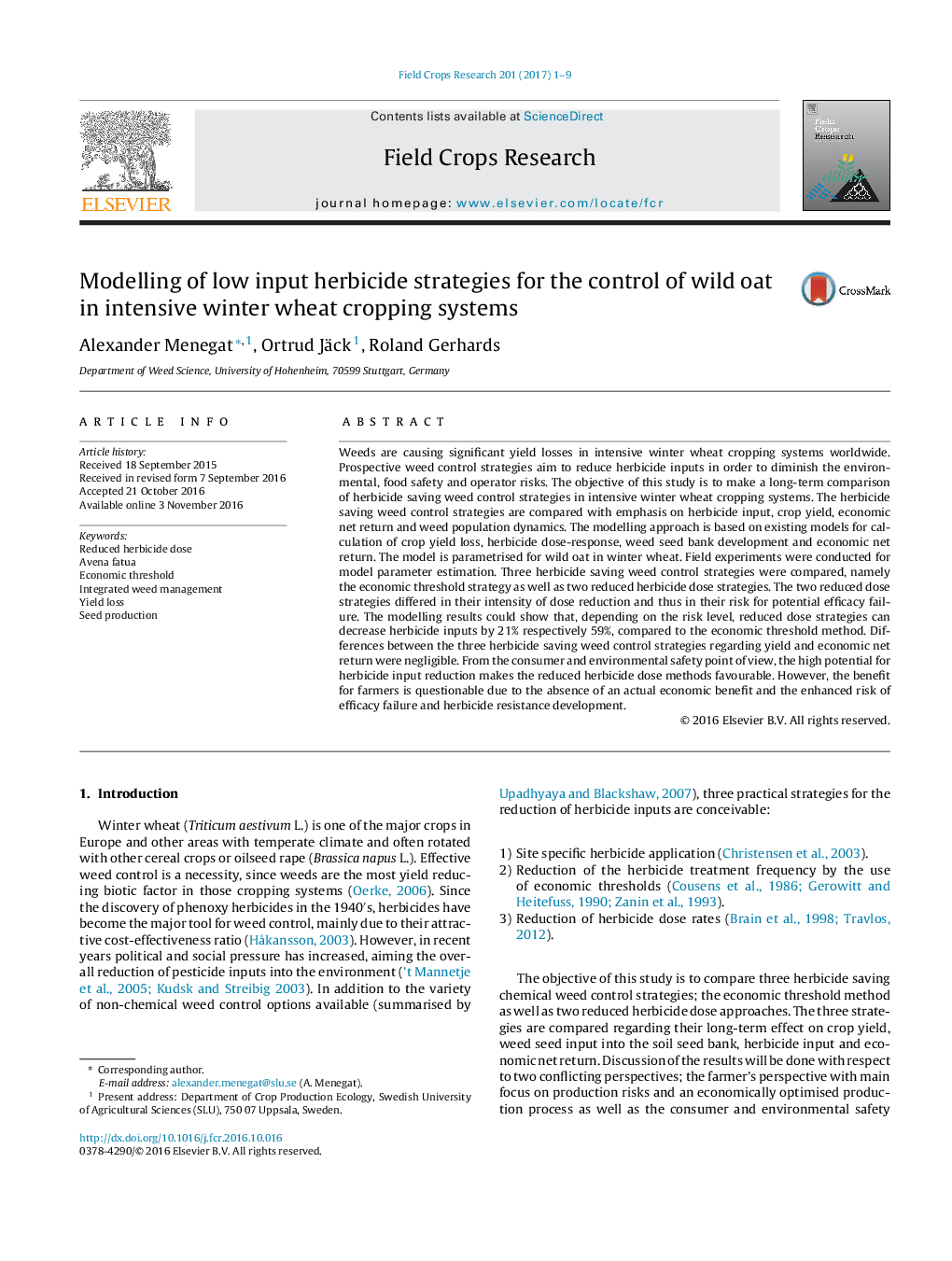| کد مقاله | کد نشریه | سال انتشار | مقاله انگلیسی | نسخه تمام متن |
|---|---|---|---|---|
| 6374325 | 1624662 | 2017 | 9 صفحه PDF | دانلود رایگان |
- Avena fatua appeared to be a very competitive weed species in winter wheat.
- Reduced herbicide dose rates could lower herbicide inputs, for the control of Avena fatua in winter wheat, between 21% and 59%.
- No economic benefit could be found for reduced herbicide dose rates compared to the economic threshold strategy.
Weeds are causing significant yield losses in intensive winter wheat cropping systems worldwide. Prospective weed control strategies aim to reduce herbicide inputs in order to diminish the environmental, food safety and operator risks. The objective of this study is to make a long-term comparison of herbicide saving weed control strategies in intensive winter wheat cropping systems. The herbicide saving weed control strategies are compared with emphasis on herbicide input, crop yield, economic net return and weed population dynamics. The modelling approach is based on existing models for calculation of crop yield loss, herbicide dose-response, weed seed bank development and economic net return. The model is parametrised for wild oat in winter wheat. Field experiments were conducted for model parameter estimation. Three herbicide saving weed control strategies were compared, namely the economic threshold strategy as well as two reduced herbicide dose strategies. The two reduced dose strategies differed in their intensity of dose reduction and thus in their risk for potential efficacy failure. The modelling results could show that, depending on the risk level, reduced dose strategies can decrease herbicide inputs by 21% respectively 59%, compared to the economic threshold method. Differences between the three herbicide saving weed control strategies regarding yield and economic net return were negligible. From the consumer and environmental safety point of view, the high potential for herbicide input reduction makes the reduced herbicide dose methods favourable. However, the benefit for farmers is questionable due to the absence of an actual economic benefit and the enhanced risk of efficacy failure and herbicide resistance development.
Journal: Field Crops Research - Volume 201, 1 February 2017, Pages 1-9
